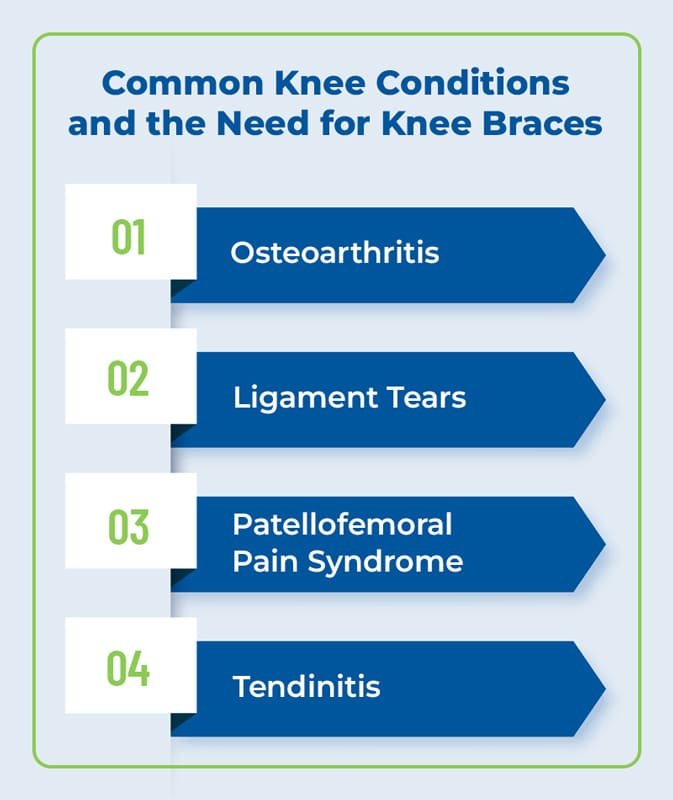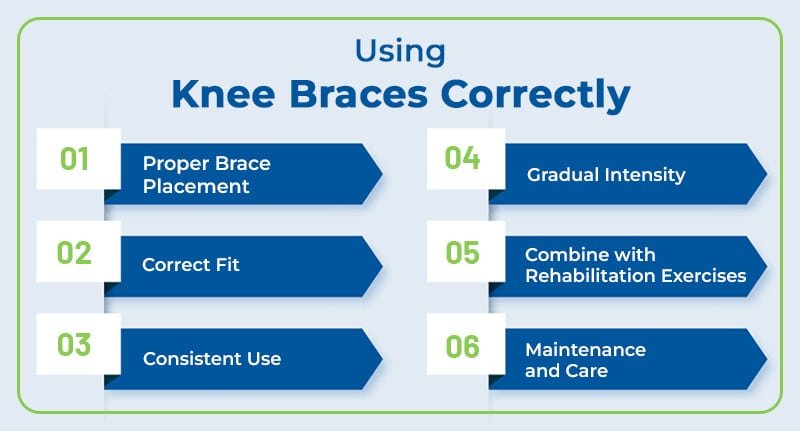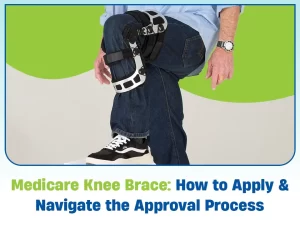Knee pain can be a debilitating condition that affects people of all ages and lifestyles. Whether you’re an athlete recovering from an injury, a senior experiencing joint discomfort, or someone looking to enhance knee stability during physical activities, knee braces can offer significant relief. In this article, we will delve into the world of knee braces, exploring their benefits, different types, and how they can become your ticket to a pain-free journey.
Understanding Knee Braces and Their Benefits
Knee braces are orthopaedic devices designed to provide support, stability, and pain relief to the knee joint. They work by redistributing pressure, reducing strain on the affected area, and improving alignment. By offering targeted support and protection, knee braces help alleviate pain, enhance mobility, and prevent further injury.
One of the key benefits of knee braces is pain alleviation. Whether you’re dealing with acute or chronic knee pain, a knee brace can help reduce discomfort by supporting the affected area and limiting excessive movement that may exacerbate the pain. Additionally, knee braces promote enhanced mobility, allowing individuals to engage in physical activities with confidence and reduced discomfort.
Furthermore, knee braces can aid in injury prevention. For athletes or individuals participating in high-impact sports or activities, a prophylactic knee brace can offer added stability and protection against potential knee injuries. By supporting the ligaments and stabilizing the joint during intense movements, these braces act as a preventive measure against strains, sprains, and other sports-related knee injuries.
Common Knee Conditions and the Need for Knee Braces
Knee pain can arise from various conditions, injuries, or degenerative diseases that affect the knee joint. Understanding these conditions is essential in determining the need for knee braces as part of an effective treatment plan.

- Osteoarthritis: Osteoarthritis is a degenerative joint disease that affects the cartilage in the knee joint, leading to pain, stiffness, and reduced mobility. Unloader knee braces are often recommended for individuals with osteoarthritis as they can help relieve pressure on the damaged area, redistribute weight, and alleviate pain, allowing for improved mobility and quality of life.
- Ligament Tears: Ligament tears, such as an anterior cruciate ligament (ACL) tear, are common sports injuries resulting in knee instability and pain. Functional knee braces are often used in the rehabilitation and recovery process to provide support and protection to the injured ligaments, allowing individuals to return to normal activities gradually.
- Patellofemoral Pain Syndrome: Patellofemoral pain syndrome, also known as runner’s knee, is characterized by pain around or behind the kneecap. Patellofemoral knee braces are designed to realign the patella and support the knee joint, reducing pain and improving overall knee function.
- Tendinitis: Tendinitis is inflammation of the tendons that attach muscles to bones. It can cause knee pain and limit mobility. Depending on the specific tendinitis location, a knee brace can provide compression, stability, and support, aiding in pain relief and recovery.
Types of Knee Braces
There are several types of knee braces available, each catering to specific conditions, injuries, and activities. Understanding the different types can help individuals choose the most appropriate knee brace for their needs.
1. Prophylactic Knee Braces
Prophylactic knee braces are designed to prevent knee injuries, especially in high-impact sports such as football, basketball, and skiing. They provide additional support to the ligaments and stabilize the joint, reducing the risk of sprains or strains during intense movements.
2. Functional Knee Braces
Functional knee braces are commonly used by individuals recovering from knee injuries or surgeries. These braces offer support and protection, allowing for a gradual return to normal activities by stabilizing the joint and reducing the risk of re-injury.
3. Unloader Knee Braces
Unloader knee braces are primarily used for individuals with knee osteoarthritis. These braces offload the weight from the affected knee area, redistributing it to healthier parts of the joint. By reducing pressure on the damaged cartilage, unloader braces can alleviate pain, improve mobility, and enhance overall function.
4. Rehabilitative Knee Braces
Rehabilitative knee braces are often prescribed after knee surgeries or rehabilitation. These braces restrict excessive movement while allowing a controlled range of motion, aiding healing and preventing further injury.
5. Patellofemoral Knee Braces
Patellofemoral knee braces are specifically designed to address patellofemoral pain syndrome and support the patella (kneecap). These braces help realign the patella, reduce pain, and improve patellar tracking during movement, ensuring better knee stability and function.
Choosing the Right Knee Brace
Choosing the right knee brace depends on various factors, including the specific condition or injury, activity level, and personal preferences. Consulting with a healthcare professional or orthopaedic specialist can help determine the most suitable type of knee brace for individual needs. Here are some considerations when choosing a knee brace:
- Consulting a Healthcare Professional: Seek guidance from a healthcare professional or orthopaedic specialist who can evaluate your specific condition, recommend suitable options, and ensure proper fit.
- Fit and Comfort: A well-fitting knee brace is crucial for optimal support and effectiveness. Look for braces that offer adjustable straps, padding, and breathable materials to ensure comfort during extended use.
- Level of Support: Different knee braces provide varying degrees of support. Assess the level of support you require based on your specific condition, activity level, and the recommendations of your healthcare professional. Some braces offer mild support for daily activities, while others provide maximum support for high-impact sports or post-surgical recovery.
- Adjustability: Look for knee braces with adjustability features, such as straps or hinges, allowing a customized fit and optimal support. Adjustability ensures that the brace can be tailored to your unique needs and provides the flexibility to accommodate changes in swelling or muscle tone.
- Activity-Specific Design: Consider the type of activities you engage in regularly. Certain knee braces are designed specifically for sports, offering features like impact resistance, stability, and flexibility. Others may be more suitable for everyday use or occupational activities, providing comfortable daily support.
- Quality and Durability: Invest in a high-quality knee brace that is durable and built to withstand the demands of your lifestyle. Look for braces made from sturdy materials that can withstand frequent use and provide long-lasting support.
- Reviews and Recommendations: Read customer reviews and seek recommendations from healthcare professionals or individuals who have used knee braces for similar conditions or activities. Their insights can provide valuable guidance in choosing the right knee brace for your needs.
Remember, choosing the right knee brace is a personal decision that should be made in consultation with your healthcare professional. They will consider your medical history, lifestyle, and specific requirements to help you find the knee brace that offers optimal support, comfort, and functionality.
Read More: Move with Confidence: Knee Braces for Active Lifestyles
Using Knee Braces Correctly
To maximize the benefits of knee braces, it is crucial to wear them correctly and follow any usage instructions provided. Here are some key considerations for using knee braces effectively:

- Proper Brace Placement: Ensure the knee brace is positioned correctly on your knee joint. Follow the guidelines provided by the manufacturer or healthcare professional to ensure proper alignment and support.
- Correct Fit: Adjust the straps or fasteners of the knee brace to achieve a snug and comfortable fit. The brace should be secure enough to provide support but not excessively tight, which could impede circulation or cause discomfort.
- Consistent Use: Wear the knee brace as directed by your healthcare professional. For some individuals, wearing the brace during physical activities or sports may be sufficient, while others may require continuous or daily use for optimal pain relief and support.
- Gradual Intensity: If you return to physical activities or sports after an injury or surgery, consult your healthcare professional about gradually increasing the intensity and duration while wearing the knee brace. This approach allows your body to adapt and build strength progressively.
- Combine with Rehabilitation Exercises: Knee braces often complement rehabilitation exercises prescribed by physical therapists. The brace provides additional support and stability during exercises, helping to protect the knee and promote proper alignment. Work closely with your physical therapist to incorporate the knee brace effectively into your rehabilitation program.
- Maintenance and Care: Follow the care instructions provided by the manufacturer to ensure the longevity and effectiveness of your knee brace. Proper maintenance, such as regular cleaning and inspection for wear and tear, will help maintain its functionality and support.
Lifestyle Changes to Support Knee Health
In addition to using knee braces, making certain lifestyle changes can contribute to improved knee health and overall well-being. Here are some tips to consider:
- Exercise and Stretching: Engage in exercises that strengthen the muscles surrounding the knee joint. Physical activities like swimming, cycling, and low-impact exercises can help improve knee stability and flexibility. Additionally, include stretching exercises focusing on the quadriceps, hamstrings, and calf muscles to maintain flexibility and reduce muscle imbalances.
- Maintaining a Healthy Weight: Excess weight strains the knee joints, increasing the risk of knee pain and conditions such as osteoarthritis. Maintain a healthy weight through a balanced diet and regular physical activity to reduce stress on your knees and promote overall joint health.
- Proper Footwear: Choose footwear that provides adequate support and cushioning for your feet and knees. Well-fitted shoes with shock-absorbing soles can help reduce the impact on your knees during daily activities and exercise.
- Avoid Overexertion: Listen to your body and avoid activities that cause excessive strain on your knees. Modify or adapt movements to minimize the risk of injury. Taking breaks, using proper techniques, and pacing yourself can help protect your knees during physical activities.
- Posture and Body Mechanics: Maintain good posture and practice proper body mechanics during activities. This includes lifting objects correctly, using your leg muscles instead of relying solely on your knees, and avoiding repetitive movements that may strain your knees.
In Conclusion
Knee braces can be invaluable tools for individuals seeking pain relief, enhanced mobility, and injury prevention. By understanding the different knee braces available, consulting with healthcare professionals, and making necessary lifestyle changes, you can find the perfect knee brace to support your journey towards a pain-free and active lifestyle. Remember, investing in your knee health today can lead to a more comfortable and fulfilling tomorrow. Consult a healthcare professional to determine the most suitable knee brace for your specific condition and requirements. Embrace the support and protection of knee braces as you embark on a pain-free journey towards optimal knee health.







